Dr. Hoai-An Truong, professor and director of public health, University of Maryland Eastern Shore School of Pharmacy & Health Professions, recently earned a Drugs in Sports Certificate from the IOC, making him one of about 200 individuals globally to receive the certification. Truong, who is also an at-large board member for the U.S. Sports Pharmacy Group, conducts research regarding the role of the pharmacist in sports.
“The student athlete wants a pharmacist on sports teams to provide education on health, medication and pain management,” he said, adding that it is an area that lends itself to interprofessional collaboration. “There is a growing interest among students in nontraditional career pathways. Working conditions for pharmacists are not the best at this time. Students who have an interest in sports find there is a missing component [that pharmacists can fill] by teaching athletes about pain management.” Truong emphasized the need to raise awareness about how pharmacists can make a difference on these healthcare teams. He works with physical therapy faculty and is developing a program to educate student athletes about alternative medicine and pain management. He also sees the regulatory area as a space where pharmacists can learn more and open doors to new career options.
“The conclusion we learned from our research is that it is important to have pharmacists on the sports team for consistency,” he continued. “Communication and collaboration can improve student athletes’ knowledge and performance outcome. It’s beneficial for pharmacy and physical therapy to collaborate regularly and consistently with student athletes and coaches to improve their health and optimize performance.”
Teeing Up a Pharmacist’s Expertise
The University of Southern California (USC) Alfred E. Mann School of Pharmacy and Pharmaceutical Sciences is one of a few pharmacy schools blazing a trail to integrate sports pharmacy in the curriculum and open up new career pathways to students.
This spring, USC announced the creation of a 12-credit certificate for licensed intern pharmacists and practicing pharmacists that will cover subjects including dietary supplements, physical assessments and drug management. Students will also be required to do rotations in interprofessional sports pharmacy ambulatory care and athlete-centric community pharmacy. The impetus for the program, according to Dr. Kari Franson, senior associate dean for academic & student affairs, and professor of clinical pharmacy, was recognizing the need to train pharmacists to be more aware of the unique needs of an athlete.
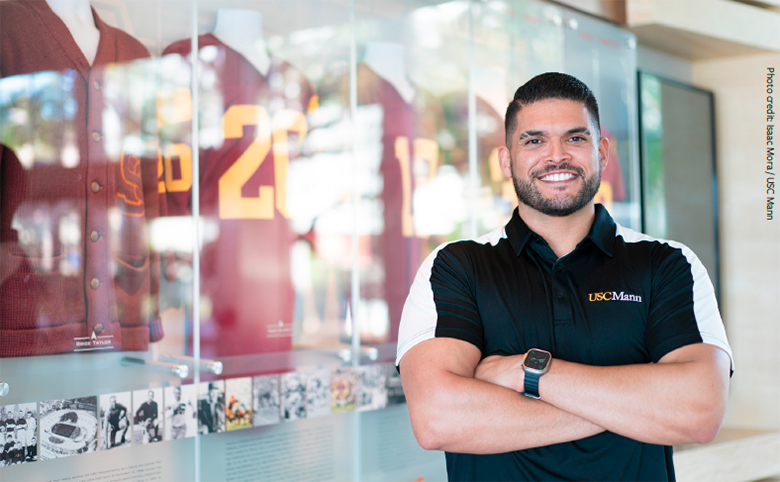
USC’s Mann School of Pharmacy hired alumnus Michael Kessler, who has worked with the Los Angeles Chargers, to be part of the interprofessional medical team.
“Our athletic department is an interprofessional group already, and they embrace the expertise that the pharmacist brings to the table,” Franson said, noting that USC is a major Olympic preparatory school. “A general therapeutics course covers how to manage medication in athletes and understanding anti-doping regulations. A physical assessment and drug management course teaches learners how to assess how an athlete is responding to treatment and how to measure the physical impact of medications.” The third required course covers supplements, which has become a $200 billion industry in the United States. “People are seeking ways in which these products can help them and optimize their performance, so we need to offer help in interpreting how to use them.”
The school hired Michael Kessler, a Mann Pharmacy School alumnus who holds a degree in exercise physiology and has worked with the Los Angeles Chargers, to teach and be part of the interprofessional medical team. Rotations may involve working with a community-based pharmacy or partners connected with the L.A. Chargers and Rams. A physician who uses digital therapeutics and focuses on measuring drug responses will work with students on medical computing. “We’ve created an important consortium of expertise to lend to this certificate program that students can tap into and learn how to best excel in the area of sports pharmacy,” Franson said.
Kessler noted that there can be silos in sports medicine, leaving gaps in what physicians and providers know. “As pharmacists, we are the medication experts. We know the side effects and can educate the patient and staff or providers,” he pointed out. “We can serve as that third-party person to close the gap on what the medication is and how it will affect the athletes. The provider may not know what’s on the prohibited list. We can step in with our familiarity with what can cause a positive drug test. We can help ensure athlete safety, efficacy of treatment and what that looks like for different sports.”

Students who participated in the pilot program last spring shared positive feedback and an enthusiasm for the new possibilities this specialty offers. Alexis Brown, a rising P4 student at the school, shared that “the sports pharmacy elective courses helped show me how I can apply the clinical knowledge I’ve learned to better support athletes of all experience levels. It helped me to develop practical skills like knowing how to reference the USADA and NCAA anti-doping lists. I feel like my goal of becoming a sports pharmacist is much more attainable having taken these courses.”
As the program grows, the hope is to train more pharmacists to collaborate with physicians and athletic trainers to provide interventions that keep athletes safe. “The [pilot course] demonstrated that this is an area of entrepreneurial growth and excitement. People are craving this information,” Franson said. “We have current faculty lending their expertise. Our dean is an expert on steroids and lends that knowledge to the research contributing to sports pharmacy. More work is needed to understand things like how cannabis can impact sports performance. We have an opportunity to have scientists and clinicians work together to generate more expertise.”
Given that sports medicine is a highly regulated area, particularly at the Olympic level, Franson said there is a strong need and desire for the kind of information that pharmacists can share. The school aims to become a hub for training and accrediting sports pharmacy specialists. “Our community pharmacies are a fantastic place for this training. The pharmacy has products in the aisles that the pharmacist should be able to adequately counsel the athlete on how to optimize utilization of something like a non-steroidal therapeutic,” she said. “Or understanding how something like CBD could be problematic, understanding the supplements and the steroids contained in those. Having that knowledge makes the pharmacist such an asset to their community. Combining the education, the clinical work and the research from the pharmacy perspective will be such a growth area for universities moving forward.”
Part of the Team
The career opportunities for student pharmacists who have a passion for sports medicine may be slightly different than the traditional roles in pharmacy practice. Cannon, for instance, consults with an anti-doping organization to help code medications that athletes can and cannot take and helps navigate questions about the medications on the prohibited list. She believes these types of opportunities will expand as education around anti-doping continues to grow.
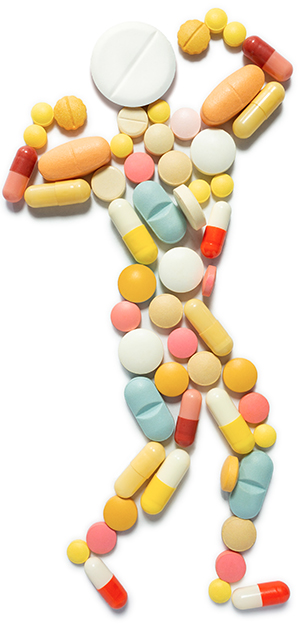 “I’d like to see pharmacists partnering with sports medicine practitioners so we can have a more collaborative approach to questions from athletes about medications and their dietary approach,” she said. “We need to educate universities about over-the-counter products and empowering students to make the right decisions when it comes to medications. Those are the big areas I already see becoming opportunities.” Other career options may include a pharmacist working directly with a school’s athletic department; some professional sports teams employ pharmacists as well.
“I’d like to see pharmacists partnering with sports medicine practitioners so we can have a more collaborative approach to questions from athletes about medications and their dietary approach,” she said. “We need to educate universities about over-the-counter products and empowering students to make the right decisions when it comes to medications. Those are the big areas I already see becoming opportunities.” Other career options may include a pharmacist working directly with a school’s athletic department; some professional sports teams employ pharmacists as well.
Dr. Mitchell Howard, clinical assistant professor at the University of Toledo College of Pharmacy and Pharmaceutical Sciences, and vice chair of the U.S. Sports Pharmacy Group, has published research on sports medicine and the pharmacist’s role. He found that medication inventory is another growth area. “Sites that had a small pharmacy on hand that would order medications need someone to restock over-the-counter items and go-bags for travel teams,” explained Howard, who also earned the IOC’s Drugs in Sports Certificate. “Some athletic trainers identified adherence concerns with athletes. A pharmacist could make sure an athlete was sticking with an antibiotic after an infection, for example. Regarding supplements, there’s a lot of information out there that may or may not be true. Having someone who could work with athletes to answer those questions, review the literature and debunk myths about supplements…our pharmacotherapy background can help us provide education to a healthcare team.”
Pharmacists can also assist with interpreting lab results and recommending appropriate over-the-counter medications for athletes. “It’s a collaborative effort to be working with the sports medicine physicians and other providers, helping with guidelines and possibly treating an existing disease state,” he continued. “A pharmacist on the team can help athletes control these things to perform at their best capabilities.”
In the classroom, Howard said he will often integrate sports medicine into topics already being covered in the curriculum. “For example, I have given a case scenario with an athlete getting drug tested and it comes back positive for a banned substance. I have students look at a medication list to see what could be causing a potential false positive.”
The best advice for recent graduates who want to explore a career in sports pharmacy may be to keep an open mind. As Cannon pointed out, more professional teams may start to invest in hiring pharmacists to work with elite athletes. “There are jobs out there that might not be defined as sports pharmacy but a pharmacist could be involved,” Howard noted.
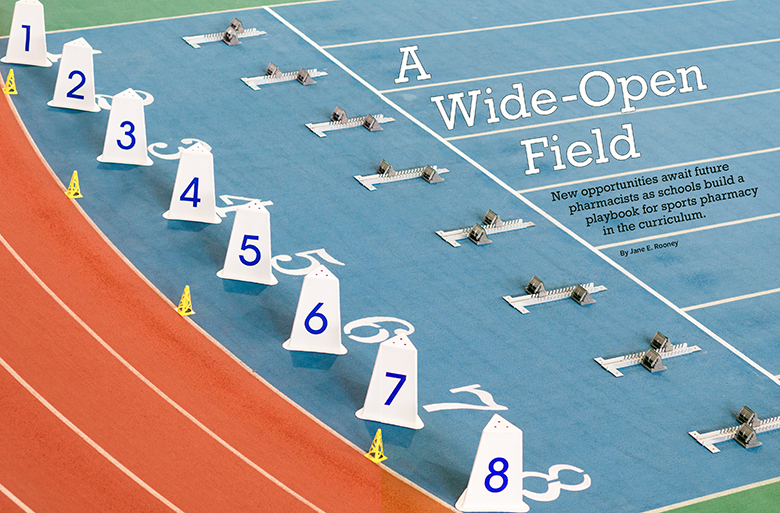
 While the pharmacist’s role in sports is not a new concept, sports pharmacy is gaining traction as a career path that allows pharmacists to tailor their expertise to a unique demographic. “This is a patient population we’ve been missing and we can reach them from a medication standpoint,” said Dr. Athena Cannon, a clinical pharmacist affiliated with the University of Minnesota College of Pharmacy and founder and chair of the U.S. Sports Pharmacy Group. “More than half of athletes are taking a dietary supplement. Awareness and education [around that] is huge. That’s true for every level from middle school all the way up to professional athletes. Anyone can seek help with their performance, focus and general health. That’s a huge area for pharmacists.”
While the pharmacist’s role in sports is not a new concept, sports pharmacy is gaining traction as a career path that allows pharmacists to tailor their expertise to a unique demographic. “This is a patient population we’ve been missing and we can reach them from a medication standpoint,” said Dr. Athena Cannon, a clinical pharmacist affiliated with the University of Minnesota College of Pharmacy and founder and chair of the U.S. Sports Pharmacy Group. “More than half of athletes are taking a dietary supplement. Awareness and education [around that] is huge. That’s true for every level from middle school all the way up to professional athletes. Anyone can seek help with their performance, focus and general health. That’s a huge area for pharmacists.”

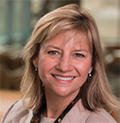 “We’ve created an important consortium of expertise to lend to this certificate program that students can tap into and learn how to best excel in the area of sports pharmacy.”
“We’ve created an important consortium of expertise to lend to this certificate program that students can tap into and learn how to best excel in the area of sports pharmacy.”

 “I’d like to see pharmacists partnering with sports medicine practitioners so we can have a more collaborative approach to questions from athletes about medications and their dietary approach,” she said. “We need to educate universities about over-the-counter products and empowering students to make the right decisions when it comes to medications. Those are the big areas I already see becoming opportunities.” Other career options may include a pharmacist working directly with a school’s athletic department; some professional sports teams employ pharmacists as well.
“I’d like to see pharmacists partnering with sports medicine practitioners so we can have a more collaborative approach to questions from athletes about medications and their dietary approach,” she said. “We need to educate universities about over-the-counter products and empowering students to make the right decisions when it comes to medications. Those are the big areas I already see becoming opportunities.” Other career options may include a pharmacist working directly with a school’s athletic department; some professional sports teams employ pharmacists as well.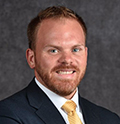 “It’s a collaborative effort to be working with the sports medicine physicians and other providers, helping with guidelines and possibly treating an existing disease state. A pharmacist on the team can help athletes control these things to perform at their best capabilities.”
“It’s a collaborative effort to be working with the sports medicine physicians and other providers, helping with guidelines and possibly treating an existing disease state. A pharmacist on the team can help athletes control these things to perform at their best capabilities.”